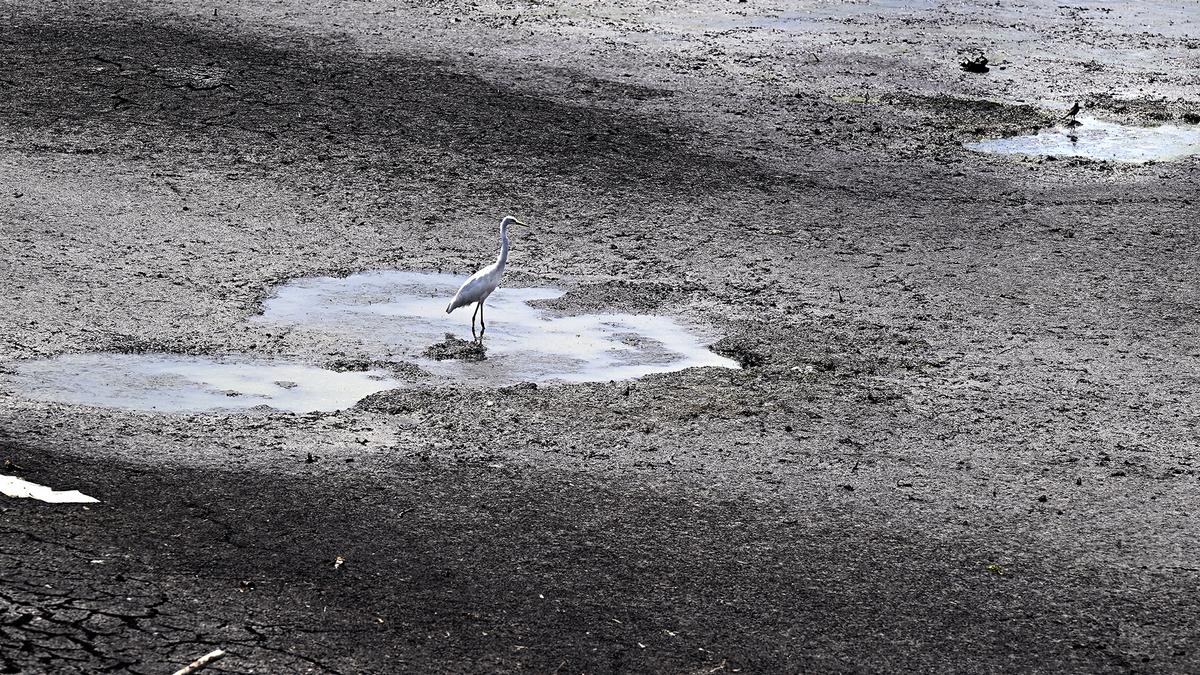Water storage in major Indian reservoirs drops below 30% in all 5 regions
The water storage in India’s major 150 reservoirs dropped for the 35th week in a row with the levels dropping to below 30 per cent in all five regions of the country this week, data from the Central Water Commission (CWC) showed.
With a sudden pause in the advancement of the south-west monsoon, which set in on May 30, there was not much improvement, though the level in a few reservoirs increased.
According to CWC’s live storage status of 150 reservoirs in the country, the level in 139 of the reservoirs was below 50 per cent of the capacity with 129 being filled less than 40 per cent.
The reservoirs’ level was 22 per cent of the 178.784 billion cubic metres (BCM) capacity at 39.765 BCM. During the same period a year ago, the storage was 79 per cent. The average storage in the past decade was 93 per cent of the capacity — clearly a worrisome situation with the start of kharif sowing.
El Nino impact
India’s water storage has been affected badly by the emergence of El Nino in June last year. It has resulted in deficient rainfall during south-west and north-east monsoons, besides winter and pre-monsoon seasons.
According to the US Global Drought Monitor, at least 25 per cent of the country was affected by drought due to this. However, the solace is that El Nino has ended, according to Australia’s Bureau of Meteorology. Global weather models indicate La Nina, which results in abundant rainfall, emerging later this year.
The India Meteorological Department has said rainfall during the the south-west monsoon this year will be above normal. As of June 6, the monsoon is 7 per cent excess with the southern peninsula receiving 59 per cent surplus. However, rainfall in central (-23 per cent), east and north-east (-4 per cent) and north-west (-16 per cent) have been lower than normal.
Seven of the reservoirs have gone dry with six of them in the southern region. Despite receiving good showers since the monsoon set in, the situation in the southern region continues to be grim.
Andhra Pradesh situation
CWC data showed that the level in the 42 reservoirs was 13 per cent of the 53.334 BCM capacity at 7.114 BCM. In Andhra Pradesh, the storage was 80 per cent below normal, while it was 4 per cent lower than usual in Telangana and 25 per cent in reservoirs that serve both these States.
In Tamil Nadu, the storage was 51 per cent lower than usual and in Karnataka, it was 24 per cent below normal. In Kerala, which has benefitted a lot from recent heavy downpours, the reservoirs had 20 per cent above normal storage.
- Also read: How to regulate water sector
In the 10 reservoirs of the northern region, the storage was 30 per cent — same as last week — of the 19.663 BCM capacity at 5.888 BCM. However, it was a tad higher than the 5.864 BCM last week. In Punjab and Rajasthan, the storage was 19 and 9 per cent below normal — a one percentage point improvement from last week.
Hopes for farmers
The level in the 23 reservoirs of the eastern region was 24.6 per cent of the 20.430 BCM capacity at 5.035 BCM with storage improving a tad in West Bengal (from -25 per cent to -23 per cent) and Bihar (-57 per cent to -51 percent) compared to the normal level. However, it dropped in Odisha to 6 per cent below normal and 10 per cent lower than usual in Tripura.
In the western region, the storage in the 49 reservoirs declined 8.359 BCM or 23 per cent of the 37.130 BCM capacity. Gujarat continued to have above-normal storage (30 per cent), while in Maharashtra, the level was 19 per cent below normal (18 per cent last week).
In the central region’s 26 reservoirs, the level declined to 13.369 or 27.7 per cent of the 48.227 BCM capacity with the storage dropping to 23 per cent (24 per cent) and 31 per cent (32 per cent) below normal in Chhattisgarh.
Hope for farmers, who depend on the south-west monsoon that makes up over 70 per cent of the annual rainfall, is the IMD statement that conditions are favourable for the south-west monsoon advancing further over the next 3-4 days across various parts of the country.
